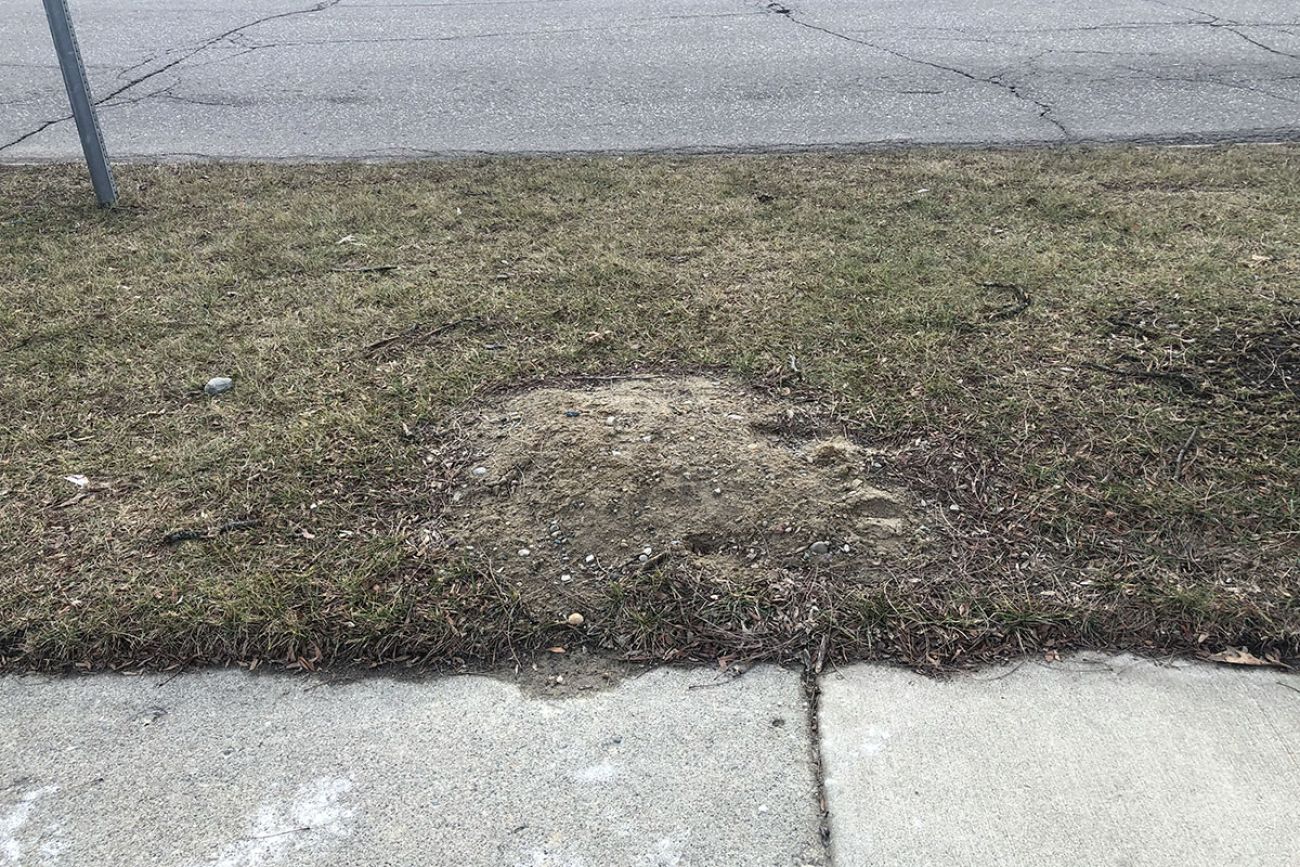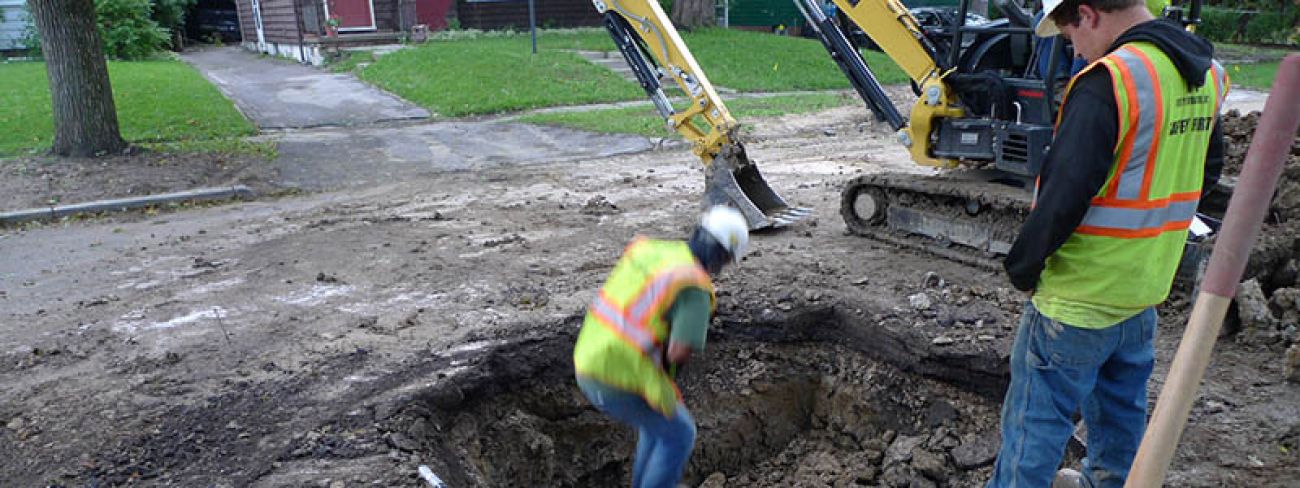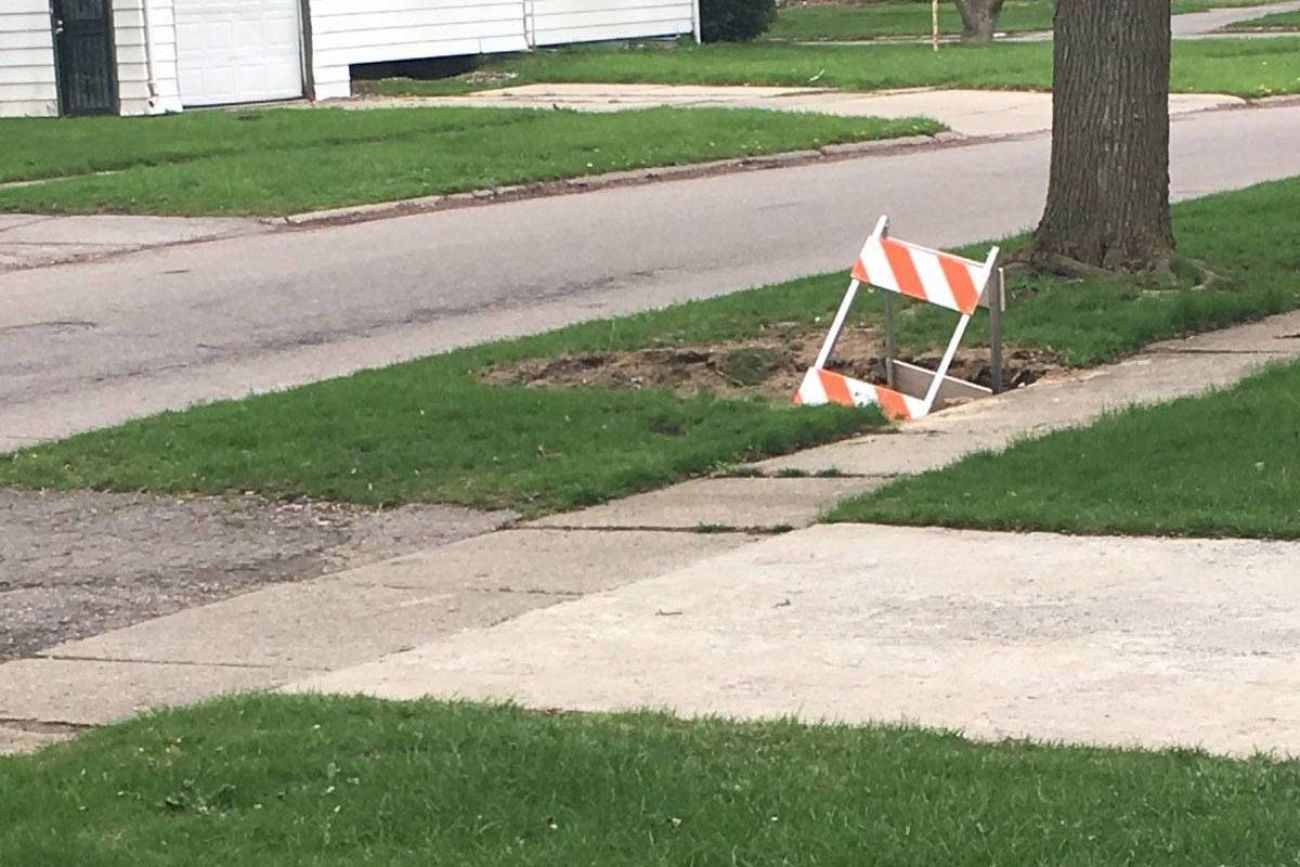Flint residents still fighting to replace lead pipes, get torn yards fixed

- Years past the original deadline to replace Flint’s lead pipes, the work still isn’t done
- And many yards and sidewalks remain unsightly years after work was to be cleaned up
- City officials blame the pandemic, contractor turnover and other issues and vow to finish pipe replacements by August
On one hand, Flint resident Donyele Darrough takes comfort in knowing her home is free of lead pipes, after crews last summer dug up the one that feeds city water into her home.
But she’s sure sick of staring at the mound of dirt they left behind.
“It’s still there in the front yard,” Darrough said. “It’s an eyesore.”

She is one of potentially thousands of Flint residents who are still waiting for lead line replacement or, for many residents, cleanup work that was supposed to be done three years ago, under a 2017 legal settlement between the city, state and Flint residents and advocacy groups following the city’s water crisis.
Related:
- Why Flint’s lead pipe replacement costs so much, and moves so slowly
- Flint finds replacing lead pipes isn’t easy. Even when state promises to pay
More than five years and several missed deadlines later, plaintiffs in the settlement allege more than a thousand Flint homes still need their service line excavated to determine whether it contains lead or galvanized steel. Thousands may still have torn up yards and sidewalks from past excavations, but recordkeeping lapses have left city officials unsure of the exact number.
Water bottle distributions have largely ended in Flint, but the state continues to provide filters, and has advised Flint residents to continue filtering their tap water until the service line replacement project is complete.
Citing those shortcomings in the city’s $97 million lead service line replacement effort, plaintiffs in the 2017 settlement will be back in federal court next week, asking a judge to force the city to set a new deadline and better communicate with residents. Without a court order, plaintiffs say, they fear another year could pass with no relief for Darrough and her neighbors.
City officials say they’re prepared to meet the plaintiffs’ request to remove the city’s last lead service lines by August, after a series of setbacks ranging from the COVID-19 pandemic to trouble with contractors.
“Our crews are working through the winter right now,” city spokesperson Caitie O’Neill told Bridge Michigan. “So we’ve had a lot of delays for a variety of reasons, but we’re moving the project forward.”
Advocates argue the delay in finishing the job is dragging out the harm caused by Flint’s water crisis. The crisis began in April 2014, when state officials approved switching Flint’s drinking water supply from Detroit’s system to the corrosive Flint River in a cost-cutting measure, without requiring treatment to keep lead from leaching out of lead pipes.
The city switched back in October 2015, but lead service lines continued to pose a hazard for residents.
The settlement required the city to excavate service lines in about 31,500 homes, and replace those made of lead or galvanized steel, with an original deadline of January 2020. The city is also supposed to restore properties marred by excavation, and maintain records of its work.

The most recent deadline extension, granted in April, gave the city until September 30 of last year to complete work at the last 1,931 homes. But by the deadline, plaintiffs allege, the city had excavated just 72.
And continued lapses in recordkeeping have left the city unsure which homes still have holes in their yards, gaps in their sidewalks or mounds of bare dirt on their property. Crews are now fanning out across the city to visually inspect properties and make a list of those that still need fixing, Flint Mayor Sheldon Neeley said in an interview with Bridge.
The city has agreed to finish excavations and replacements by August, and find out by May which properties still have excavation damage. After that, the plaintiffs and city will negotiate a deadline for repairs.
Other cities have done the job much faster, though some had fewer homes to excavate. In Benton Harbor, crews are nearly done with a lead line replacement effort that began 14 months ago, involving nearly 4,500 homes. Newark, New Jersey replaced nearly 24,000 lead lines in less than three years.
Neeley, who has been mayor since November 2019, contends he inherited many of the challenges that stalled Flint’s lead removal mission, and is working to get things back on track.
First, he said, came the pandemic, which forced shutdowns that paused Flint’s lead line replacement. Once work was able to resume, supply chain issues made it difficult to access copper pipe and other needed supplies.
The city also had trouble with contractors, including one that dumped construction waste in a residential neighborhood and others that inspected the same properties repeatedly.
Beyond that, Neeley said, contractor turnover resulted in poor recordkeeping that left the city unsure which properties still need restoration.
“When we came here, we had to make heads and tails with current information that we had,” Neeley said.
Melissa Mays, a Flint activist and plaintiff in the suit, disagreed.
“It’s just been excuse after excuse,” said Mays, who contends her own yard is still damaged from a 2019 service line replacement.

Neeley city officials are redoubling efforts to contact residents who still haven’t consented to letting construction crews on their property.
“We're gonna get this job done,” he said.
But without a court order to enforce the new deadline, Mays said she fears more delays.
“There’s been too many broken promises,” she said, “which is why we have to go to court.”
And the city and plaintiffs remain in conflict over one item: After the city inspects properties to decide whether they still need yard or sidewalk repairs, the plaintiffs want a door hanger left behind to alert residents that the city believes their work is done. That, they argue, gives residents a chance to challenge the city if they disagree.
The city’s lawyers contend that would amount to a new requirement beyond the scope of the 2017 settlement. U.S. District Judge David M. Lawson has scheduled a hearing on the dispute next Wednesday, February 15.
Michigan Environment Watch
Michigan Environment Watch examines how public policy, industry, and other factors interact with the state’s trove of natural resources.
- See full coverage
- Subscribe
- Share tips and questions with Bridge environment reporter Kelly House
Michigan Environment Watch is made possible by generous financial support from:
Our generous Environment Watch underwriters encourage Bridge Michigan readers to also support civic journalism by becoming Bridge members. Please consider joining today.
See what new members are saying about why they donated to Bridge Michigan:
- “In order for this information to be accurate and unbiased it must be underwritten by its readers, not by special interests.” - Larry S.
- “Not many other media sources report on the topics Bridge does.” - Susan B.
- “Your journalism is outstanding and rare these days.” - Mark S.
If you want to ensure the future of nonpartisan, nonprofit Michigan journalism, please become a member today. You, too, will be asked why you donated and maybe we'll feature your quote next time!






